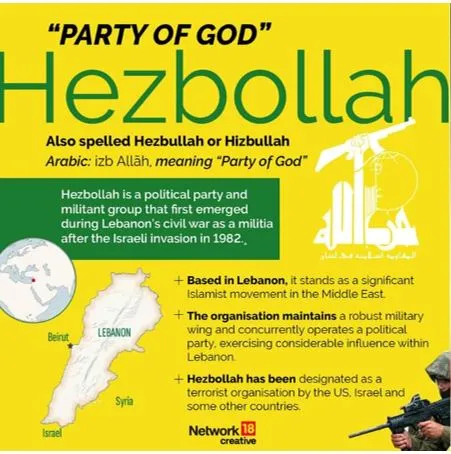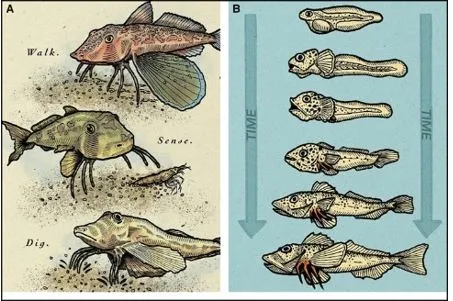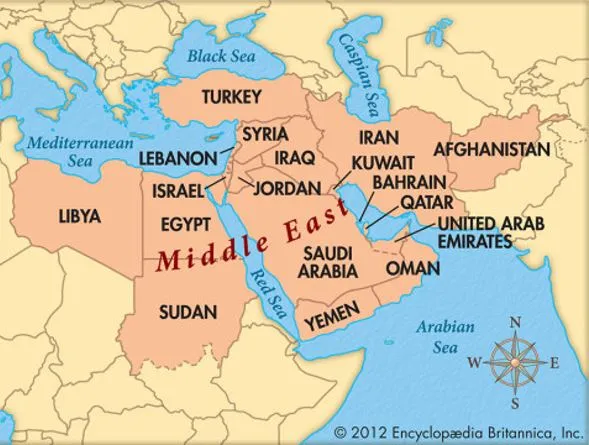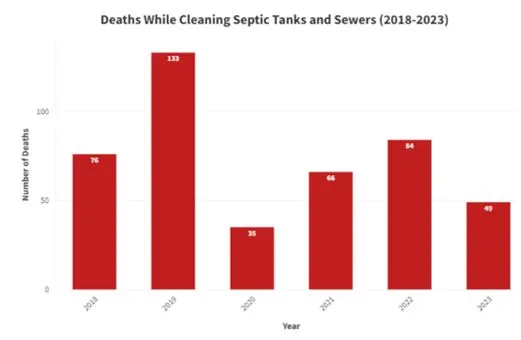

30th September 2024 (11 Topics)
Mains Issues
Context
Turkey's recent bid to join the BRICS group—comprising Brazil, Russia, India, China, and South Africa—has raised significant discussions regarding its geopolitical strategy, economic motivations, and implications for its relationship with NATO. Also, this as a sign of Turkey's growing interest in fostering relations with India, particularly as it seeks BRICS membership.
Why Turkey wants to join BRICS?
- Economic Diversification: Historically reliant on European markets, Turkey’s economy has faced stagnation. By joining BRICS, Turkey aims to access emerging markets, particularly in Asia, enhancing its trade relationships.
- Strategic Positioning: Joining BRICS offers Turkey the chance to enhance its geopolitical significance. By aligning with emerging economies like China and India, Turkey aims to reshape its image as a leader within the Islamic world while distancing itself from its previous hardline stance.
Potential Implications for Turkey's International Relations
- NATO Dynamics: While Turkey is unlikely to abandon NATO, the move signals a strategic diversification of its foreign policy. This dual alignment could enhance Turkey's geopolitical leverage but may lead to tensions with NATO members, especially given Turkey's prior acquisition of Russian defense systems.
- Regional Influence: Membership in BRICS could amplify Turkey's influence in regions such as the Balkans, the Middle East, and Central Asia.
- Economic and Investment Opportunities: Through BRICS, Turkey anticipates attracting investments, particularly for infrastructure and renewable energy projects. The BRICS New Development Bank could be a vital source of funding, facilitating Turkey's economic growth and enhancing its capacity to navigate current financial challenges.
- In BRICS, Brazil, China and India are currently emerging as the world’s largest economies. By joining BRICS, Turkey will place itself in a group that advocates a more equitable global order, challenging the dominance of West-led institutions such as the IMF and the World Bank.
Fact Box: BRICS
|


Mains Issues
Context
The Middle East is once again under intense scrutiny after the death of its leader Sheikh Hassan Nasrallah. Hezbollah has confirmed the death of its leader, after Israel said it had killed the 64-year-old in an airstrike on Beirut.
What is Hezbollah?
- Hezbollah is a militant group founded in Lebanon in 1982 during the 15-year Lebanese Civil War. It has evolved into a significant political and military force within the country.
- Supported by Iran, Hezbollah aims to resist Israeli presence and influence in the region.
- Its animosity toward Israel has persisted since the latter's occupation of southern Lebanon, which lasted until 2000.
- It is considered a terrorist organization by the U.S. government.
Recent Escalations
- Following Hamas' attack on Israel on October 7, 2024, Hezbollah expressed solidarity with Hamas, leading to increased skirmishes at the Israel-Lebanon border.
- The situation escalated dramatically after Israeli airstrikes targeted Hezbollah assets, marking the deadliest day of conflict in Lebanon since 2006, with significant civilian casualties.
- Hezbollah and Hamas are both supported by Iran. Both groups share a common enemy in Israel.
- Military Capabilities: Hezbollah's military capabilities are noteworthy, with a reported arsenal capable of targeting all regions of Israel. This capability is supported by Iranian military aid.

What is Middle-East Crisis?
- The Middle East is a region marked by instability and complex conflicts affecting many of its countries. Key issues include:
- Destruction in Syria: Ongoing violence has led to widespread devastation.
- Iraq's Challenges: The country is struggling with political fragmentation and violence.
- Unrest in Egypt and Libya: Both nations have experienced significant upheaval and instability.
- Rivalries Among Gulf Monarchies: Tensions between oil-rich nations complicate regional dynamics.
- Relations with Iran: Complicated ties with Iran influence various conflicts and alliances.
- Social Discontent: Widespread dissatisfaction among populations fuels unrest.
- Ethno-sectarian Divisions: Conflicts often exploit divisions based on ethnicity and sect.
- Rise of Jihadism: Extremist groups continue to gain influence.
- S. Policy Confusion: Inconsistent American policies have added to the region's challenges.
- Israeli-Palestinian Conflict: Ongoing disputes between Israel and Palestinians remain a central issue. Israel is currently fighting:
- Gaza Strip
- pockets of the West Bank
- Hezbollah in the north
- Houthi forces in Yemen along the Red Sea and the Islamic Republic
Fact Box: What Is the Middle East?The Middle East is a geographical region primarily located in western Asia, extending into parts of northern Africa and southeastern Europe. Geographical Boundaries
|


Mains Issues
Context
The Indian government has recently launched an ambitious initiative to profile and support sewer and septic tank workers (SSWs) across the country. This effort is part of the NAMASTE programme, which aims to mechanize sewer cleaning and prevent deaths associated with hazardous manual cleaning. Recent data reveals alarming statistics regarding the demographics of these workers, their conditions, and the need for systemic reforms in sanitation practices.
Key Findings
- Demographics of Workers: Over 38,000 workers have been profiled, with 9% belonging to Scheduled Castes (SC), Scheduled Tribes (ST), or Other Backward Classes (OBC). Specifically, 68.9% are SC, 14.7% are OBC, and 8.3% are ST.
- The profiling is conducted by the Ministry of Social Justice and Empowerment and focuses on various roles related to sewer cleaning, including drivers and helpers as part of its NAMASTE programme.
- Hazardous Conditions: Between 2019 and 2023, at least 377 workers died while performing hazardous cleaning tasks. The NAMASTE programme seeks to address these safety issues by providing training and better equipment.
- Current Status: The profiling has been completed in twelve states and Union Territories, while others are still ongoing. The government estimates there are approximately 100,000 SSWs across India.
- Economic Support: Since the program's inception, capital subsidies of Rs 2.26 crore have been disbursed to 191 beneficiaries for self-employment projects.
Causes of the Issue
- Historical Discrimination: Sanitation work in India is locked in with caste and carries social stigma. The majority of SSWs belong to marginalized communities highlights deep-rooted caste-based inequalities in access to better employment opportunities.
- Inadequate Mechanization: The lack of mechanized solutions for sewer cleaning has perpetuated hazardous working conditions, forcing workers to rely on manual methods that pose significant health risks.
Need to focus on SSWs
- The Union government’s rationale is that manual scavenging as a practice has ended across the country and what needs to be fixed now is the hazardous cleaning of sewers and septic tanks.
- It draws this distinction based on a technical difference in how manual scavenging and hazardous cleaning are defined in the Prohibition of Employment as Manual Scavengers and their Rehabilitation Act.
- The NAMASTE programme targets “workers directly associated with sewer and septic tank cleaning including drivers of desludging vehicles, helpers, machine operators and cleaners”.
- There are 100 core sanitation workers for an urban population of five lakh. As of 2021, there are likely to be one lakh SSWs employed by India’s 4,800 ULBs.
Fact box: About NAMASTE Scheme
Key-Legislations
|


Prelims Articles
Context
The Indian government has recently launched the PM Surya Ghar: Muft Bijli Yojana (PMSY), a significant initiative aimed at promoting rooftop solar energy across the country. With a budget of Rs 75,000 crore, the scheme seeks to address rising electricity costs, reduce reliance on financially struggling electricity distribution companies, and enhance the adoption of clean energy solutions among households.
Key Highlights
- As of August 2024, Gujarat leads the rooftop solar race with 4,195 MW installed capacity, followed by Maharashtra (2,487 MW) and Rajasthan (1,269 MW), contributing to India’s total RTS capacity of 13,889 MW.
- Despite Gujarat’s dominance, Assam surprised analysts by leading PMSY applications with 2.23 lakh, followed by Gujarat (2.1 lakh) and Maharashtra (1.9 lakh).
- However, the promise of “zero electricity bills” isn’t guaranteed for everyone.
- About 90 per cent of applicants are availing loans for installations, with many opting for systems larger than the subsidised 3 kW, which incurs charges for usage above 300 units.
About the Scheme
- PM Surya Ghar: Muft Bijli Yojana is a Rs 75,000 crore initiative designed to install one crore rooftop solar systems nationwide.
- Subsidy Structure: The scheme offers substantial subsidies—60% for solar units up to 2 kW and 40% for systems between 2-3 kW, capped at a maximum capacity of 3 kW.
- 60% subsidy for systems up to 2 kW.
- 40% subsidy for systems between 2-3 kW.
- Maximum capacity for subsidies is capped at 3 kW.
- Financial support translates to up to Rs 78,000 for larger installations.
- PMSY aims to transform household energy consumption by promoting the installation of rooftop solar systems. The key features of the scheme include:
- Household Empowerment: The PMSY envisions households becoming independent power producers, potentially generating their own electricity while remaining connected to the grid.
- Regional Insights: Gujarat's prior initiatives, like the Surya Gujarat scheme, have significantly influenced current success in rooftop solar capacity, while states like Assam are showing unexpected leadership in applications.
- Financial Implications: Despite expectations for reduced electricity bills, consumers face fixed grid charges and may incur costs for excess usage beyond the subsidized limits. The scheme encourages long-term savings and sustainability through clean energy.


Prelims Articles
Context
Recent research has unveiled intriguing findings about Mars' atmospheric history, suggesting that the planet's original atmosphere may have been absorbed by minerals in its clay-rich surface. This revelation is significant as it provides insights into how Mars transformed from a once habitable world, with abundant water, into the dry, inhospitable environment we see today.
Background
- Over 3.5 billion years ago, Mars had a dense, carbon dioxide-rich atmosphere that enabled the existence of liquid water.
- However, this atmosphere eventually thinned dramatically, leading to the drying up of surface water.
- Scientists have long sought to understand the processes that caused this atmospheric loss.
- The recent research provides insights into how water and rock interactions may have contributed to this phenomenon.
Key Findings from the Research on Mars' Atmosphere
- Absorption of Atmosphere by Clays: Researchers suggest that Mars' original atmosphere may have been absorbed by clay minerals, particularly smectites, which efficiently trap carbon dioxide.
- Water Interaction with Rocks: The study posits that water, which was present in Mars' early history, could have seeped through the planet's crust, interacting with ultramafic rocks. This process would have led to a series of chemical reactions that transformed carbon dioxide into methane, sequestering it in clay.
- Historical Geological Processes: The findings draw parallels between Earth's geological processes and those on Mars, particularly in how smectites are formed. On Earth, tectonic activity creates conditions for these clays, while Mars lacks such activity, prompting researchers to investigate alternative formation mechanisms.
- Significant Carbon Sequestration: The research indicates that a substantial amount of Mars' carbon dioxide could have been stored in clay-rich layers, potentially covering the planet with over 1,100 meters of smectite.
- Impact on Mars’ Habitability: The loss of the atmosphere could explain why Mars became uninhabitable, as the lack of a protective atmosphere would have allowed liquid water to freeze and contributed to the planet's current desolate state.
Fact Box: About Mars
|


Prelims Articles
Context
Possible collapse of permafrost, which are permanently frozen rock or soil formations, is an emerging climate-change induced issue in the upper reaches of the Himalayas. As Earth's climate warms, the permafrost is thawing. That means the ice inside the permafrost melts, leaving behind water and soil.
What is Permafrost?
- Permafrost is a permanently frozen layer on or under Earth's surface.
- It consists of soil, gravel, and sand, usually bound together by ice. Permafrost usually remains at or below 0°C (32ºF) for at least two years.
- It can be found on land and below the ocean floor. It is found in areas where temperatures rarely rise above freezing.
- Types: A typical classification recognizes:
- Continuous permafrost (underlying 90-100% of the landscape)
- Discontinuous permafrost (50-90%)
- Sporadic permafrost (0-50%)
- Challenges: There is limited understanding of permafrost dynamics in the Indian Himalayas. Recent disasters, such as the South Lhonak glacial lake bursting, may be linked to permafrost issues, highlighting the need for more research.


Prelims Articles
Context
India has made a significant commitment to ocean conservation by signing the Biodiversity Beyond National Jurisdiction (BBNJ) Agreement, also known as the "Treaty of the High Seas."
About BBNJ
- The BBNJ Agreement is designed to safeguard marine life in areas of the ocean that fall outside the jurisdiction of any single country, which begins 370 kilometers from the coastline and constitutes approximately two-thirds of the world's oceans.
- It is an international legally binding treaty, comes under the Law of the Seas Treaty.
- Key points about the agreement:
- Sustainable Resource Use: The treaty aims to ensure that countries use ocean resources sustainably and equitably, preventing any nation from claiming these resources as their own.
- Inclusive Approach: The BBNJ promotes a blend of traditional knowledge and modern scientific methods to enhance ocean protection efforts.
- Regulatory Framework: It establishes rules for conducting activities in the high seas, including mandatory environmental impact assessments to minimize harm to marine ecosystems.
- Alignment with Sustainable Development Goals: The agreement supports the achievement of Sustainable Development Goal 14, which focuses on conserving and sustainably using oceans, seas, and marine resources.
- Long-term Negotiations: After two decades of discussions, the BBNJ was finally adopted in 2023, banning harmful practices such as destructive fishing and pollution in high-seas areas.
- India's Participation: By joining the BBNJ, India aims to enhance its marine conservation strategies, allowing for the establishment of marine protected areas in the high seas and fostering international cooperation on technology and resource management.
- Global Support: The BBNJ Agreement has garnered support from 91 countries, including notable signatories like Australia, Canada, and many EU nations, reflecting a growing global consensus on the need to protect high-seas biodiversity.
- Currently, about 100 countries have signed it, and eight of them have ratified it.
- It would also contribute to achieving several SDGs, particularly SDG14 (Life Below Water).
- The BBNJ Agreement is the third implementation agreement under UNCLOS, alongside its sister implementation agreements:
- 1994 Part XI Implementation Agreement (which addresses the exploration and extraction of mineral resources in the international seabed area)
- 1995 UN Fish Stocks Agreement (which addresses the conservation and management of straddling and highly migratory fish stocks)
Fact Box:What are High Seas?
About United Nations Convention on the Law of the Sea (UNCLOS)
|


Prelims Articles
Context
A recent study published in Current Biology has shed light on the evolutionary adaptations of Sea Robins, a unique species of fish known for their unusual "walking" abilities. This research is significant as it offers insights into the evolutionary pathways that led to the development of limbs in terrestrial animals, including humans.
About the Species: Sea Robins
- Sea Robins belong to the family Callionymidae, which includes several species of bottom-dwelling fish.
- Habitat: These fish are primarily found in tropical and subtropical oceans, residing at the seafloor where they feed on a diet of worms and crustaceans.
- Physical Characteristics: Sea robins are notable for their six leg-like appendages, which are actually extensions of their fins.
- These adaptations allow them to "walk" across the ocean floor, providing a unique method of locomotion compared to other fish.
- Feeding Mechanism: In addition to movement, some species of sea robins use their legs to taste prey hidden in the substrate, showcasing a fascinating evolutionary repurposing of their appendages.
- Genetic Connection to Humans: The study highlights that the genes responsible for the development of these appendages in sea robins are similar to those involved in the formation of human limbs. This connection provides insights into how ancient fish adapted to life on land and evolved into tetrapods—four-limbed animals, including humans.



Editorials
Context
India's agroforestry sector presents a significant opportunity to enhance carbon finance through Afforestation, Reforestation, and Revegetation (ARR) initiatives. With the potential to expand agroforestry from 28.4 million hectares to 53 million hectares by 2050, it plays a vital role in both environmental sustainability and economic development. Recent research indicates that, with appropriate policies, the sector could contribute an additional carbon sink of over 2.5 billion tons of CO2 equivalent by 2030.
Current Challenges in Carbon Standards
- Common Practice Definition: The "common practice" criterion in carbon finance assesses whether a project is additional and beyond typical activities. Current standards, like Verra's VCS and the Gold Standard, may classify many Indian agroforestry practices as “common,” thus excluding them from carbon credits.
- Fragmented Landholdings: India's agricultural landscape is characterized by small and fragmented landholdings, with 1% of farmers owning less than two hectares. This scattered approach often leads to agroforestry practices that fail to meet the additionality criteria set by global carbon standards.
- Impact on Farmers: Excluding small and marginal farmers from ARR carbon finance projects denies them the chance to earn additional income from carbon credits, exacerbating economic challenges in rural areas.
Need for India-Centric Approaches
- Redefining Common Practice: An urgent need exists to redefine the common practice criterion to reflect the unique challenges of India's agroforestry sector. Recognizing even small, incremental changes in land management can be transformative for farmers.
- Unlocking Carbon Sequestration Potential: Revising these standards could unlock significant carbon sequestration potential, allowing more farmers to participate in carbon finance projects and generate additional income streams, thereby supporting India’s climate goals.
- Promoting Systematic Agroforestry: Carbon credit platforms should design incentives that encourage systematic agroforestry practices, enhancing both environmental sustainability and rural livelihoods while addressing challenges like low productivity and environmental degradation.
Benefits of ARR Initiatives
- Alternative Livelihoods: Agroforestry integrated with ARR initiatives can provide alternative livelihoods for farmers, addressing issues like dependence on monsoons and low agricultural productivity.
- Economic Diversification: By integrating trees into agricultural landscapes, farmers can tap into additional revenue streams through carbon sequestration, offering a viable pathway to income diversification amidst unpredictable weather patterns.
- Environmental Benefits: ARR projects not only provide economic gains but also enhance soil fertility, improve water retention, and mitigate erosion, thereby promoting long-term agricultural sustainability and resilience.
Practice Question
Q. Discuss the potential of agroforestry in India as a strategy for enhancing carbon finance through ARR initiatives. What changes are necessary in international carbon standards to accommodate the unique challenges faced by small and marginal farmers?


Editorials
Context
The recent Summit of the Future has raised critical questions regarding global governance, emphasizing whether the focus should be on great power competition or addressing persistent institutional imbalances and global inequality. The summit's outcomes, including initiatives like the Global Digital Impact initiative and a Declaration on Future Generations, highlight the need for cooperation while reflecting ongoing challenges in global governance structures.
Outcomes and Challenges of the Summit
- Global Initiatives: The Summit led to the establishment of the Global Digital Impact initiative and the Declaration on Future Generations, aiming to inspire national actions and foster international cooperation.
- Limitations in Security Council Reform: No clear pathway for Security Council reform was agreed upon, with discussions remaining centered on the inclusion of different member categories, reflecting ongoing dissatisfaction among developing nations.
- Inadequate Support for Developing Nations: While there are pledges to increase the voice of developing countries in global financial institutions, the practical support for addressing their concerns remains limited and often overlooked.
Historical Context and Current Imbalances
- G-7's Agenda-Setting Role: The G-7 continues to shape the global agenda, often viewed as a club of former colonial powers rather than a coalition of victors from World War II, perpetuating imbalances in global governance.
- Economic Disparities Persist: Despite the emergence of BRICS nations like China and India, the structural inequalities rooted in colonial history persist, with developing countries facing severe economic challenges and a staggering $29 trillion in public debt.
- UN Sustainable Development Goals Underperforming: Only 17% of the Sustainable Development Goals are currently on track, illustrating the ongoing struggles of developing countries in achieving equitable progress within the global framework.
Future Directions for Global Governance
- Shift in Global Power Dynamics: While the foundations of power remain with the West for the foreseeable future, trends indicate a gradual shift towards the Global South, particularly with Asia's rising influence in the global economy.
- Redefining Measures of Prosperity: The Summit recognizes the need to expand GDP metrics to include sustainability and broader measures of well-being, encompassing infrastructure, health care, and education to reflect true living standards.
- Engaging Asia in Global Governance: There is a pressing need for deeper involvement of Asian countries in shaping global governance frameworks, particularly in emerging areas like AI, to ensure that their perspectives and priorities are adequately represented.
Practice Question
Q. Analyze the implications of the outcomes from the Summit of the Future on global governance. How do historical inequalities and emerging power dynamics shape the discourse on international cooperation and development for the Global South?


Editorials
Context
The United Nations has designated September 29 as the International Day of Awareness of Food Loss and Waste (FLW), highlighting its significant implications for food security and environmental sustainability. Recent reports indicate that about 30% of global food production is lost or wasted, with initiatives from the Food and Agriculture Organisation (FAO) and the United Nations Environment Programme (UNEP) advocating for a 50% reduction in FLW to meet Sustainable Development Goals (SDGs).
India's Food Loss and Waste Scenario
- Staggering Economic Losses: India suffers food losses worth Rs 1.53 trillion ($18.5 billion), with 12.5 million metric tons of cereals, 2.11 million metric tons of oilseeds, and 1.37 million metric tons of pulses lost annually.
- Horticultural Crop Losses: Approximately 49.9 million metric tons of horticultural crops are lost each year due to inadequate cold chain infrastructure, affecting both availability and farmers’ income potential.
- Quality Loss Assessment: A study by ICRIER-ADMI found that soybean has the highest post-harvest loss at 15.34%, followed by wheat at 7.87%, indicating the urgent need for technological interventions across the agricultural value chain.
Technological Solutions to FLW
- Mechanisation Benefits: Farmers utilizing combine harvesters experience significantly lower paddy losses. Mechanisation can reduce overall loss in paddy to just 2.84%, yet only 4.4% of cultivator households own tractors, limiting access for small farmers.
- Role of Farmer Producer Organisations: Farmer Producer Organisations (FPOs) and Custom Hiring Centres (CHCs) can facilitate access to farm machinery through group leasing, addressing the mechanisation gap for small and marginal farmers.
- Importance of Infrastructure: Improving drying and storage infrastructure is crucial; traditional sun drying methods pose risks. Solar dryers can mitigate these losses, while the government’s grain storage plan aims to increase capacity by 70 million metric tons over five years.
Policy Recommendations for Reducing FLW
- Critical Need for Policy Support: To ensure small farmers benefit from technological advancements, supportive policies are necessary. The Jute Packaging Material Act (JPMA) should be revisited to promote the use of airtight bags, reducing losses due to spoilage.
- Impact of Climate Change: Addressing food loss is essential not only for economic efficiency but also for food security and resilience against climate change and malnutrition challenges in India.
- Comprehensive Approach Required: Reducing post-harvest losses requires a holistic approach that combines technology, infrastructure improvements, and effective policy measures to enhance food systems and environmental sustainability.
Practice Question
Q. Critically evaluate the current state of food loss and waste in India and discuss the technological and policy measures necessary to mitigate these losses. How can these efforts contribute to achieving food security and sustainability in the context of climate change?






